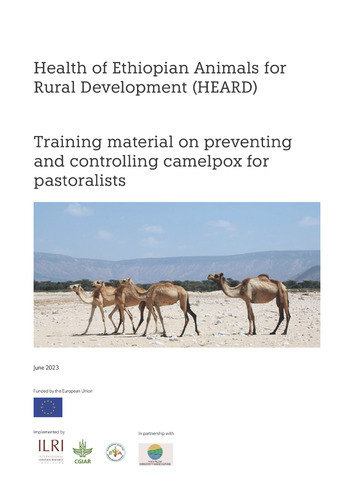Training material on preventing and controlling camelpox for pastoralists
Abstract
Camel husbandry is the main source of living for millions of pastoralists in the arid and semi-arid zones of Ethiopia. The most important constraints to camel production are widespread diseases, poor veterinary service and shortage of feed and water. Parasitic, bacterial and nutritional diseases are the most important camel diseases. The occurrence and severity of the diseases vary with seasons and animal groups.
Camelpox is one of the diseases that affect camel production having huge economic implications. Good camel management plays a significant role in the prevention and control of the disease. However, pastoralists have limited awareness and knowledge of the natural history of the disease and the prevention measures. Raising their awareness and knowledge through experiential training can help reduce disease incidence resulting in decreased economic losses.

